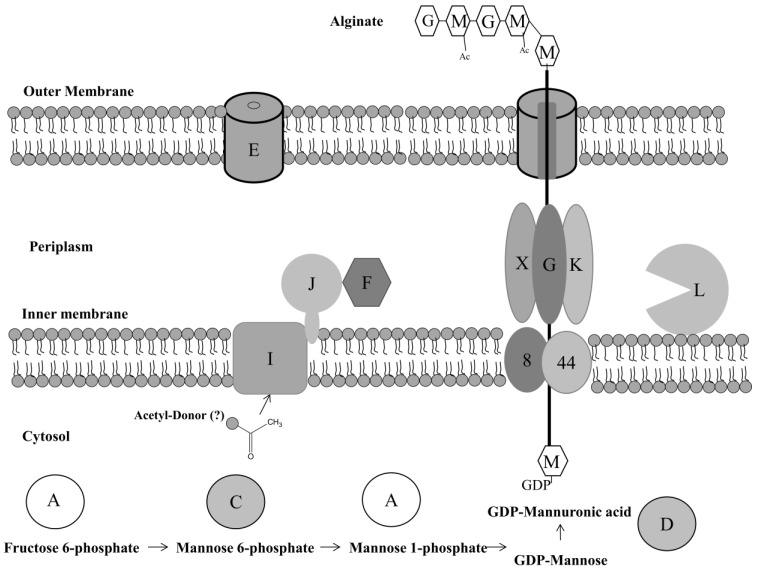Figure 3.
The synthesis and polymerization mechanism involved in the production of Pseudomonas aeruginosa alginate. The letters A–X and numbers 8 and 44 correlate to alginate biosynthetic enzymes that are preceded by Alg (for example A = AlgA). AlgA, AlgC, and AlgD control the production of the alginate precursor GDP-mannuronic acid. Both Alg8 and Alg44 transport this molecule for polymerization in the periplasm. Alginate lysase (AlgL) produces short oligomers that prime polymerization. AlgG interacts with AlgK and AlgX protecting the production of the alginate polymer by forming a scaffold in the periplasm. Epimerization of polymerized mannuronate residues is also controlled by AlgG, a C-5-epimerase. Acetylation of some mannuronate residues occurs via the enzymes AlgF, AlgJ, and AlgI at O2 and/or O3 positions, with AlgE transporting the formed alginate out of the cell. Adapted from Franklin and Ohman 2002 [122], Ramsey 2005 [125], and Gimmestad, 2003 [126].

